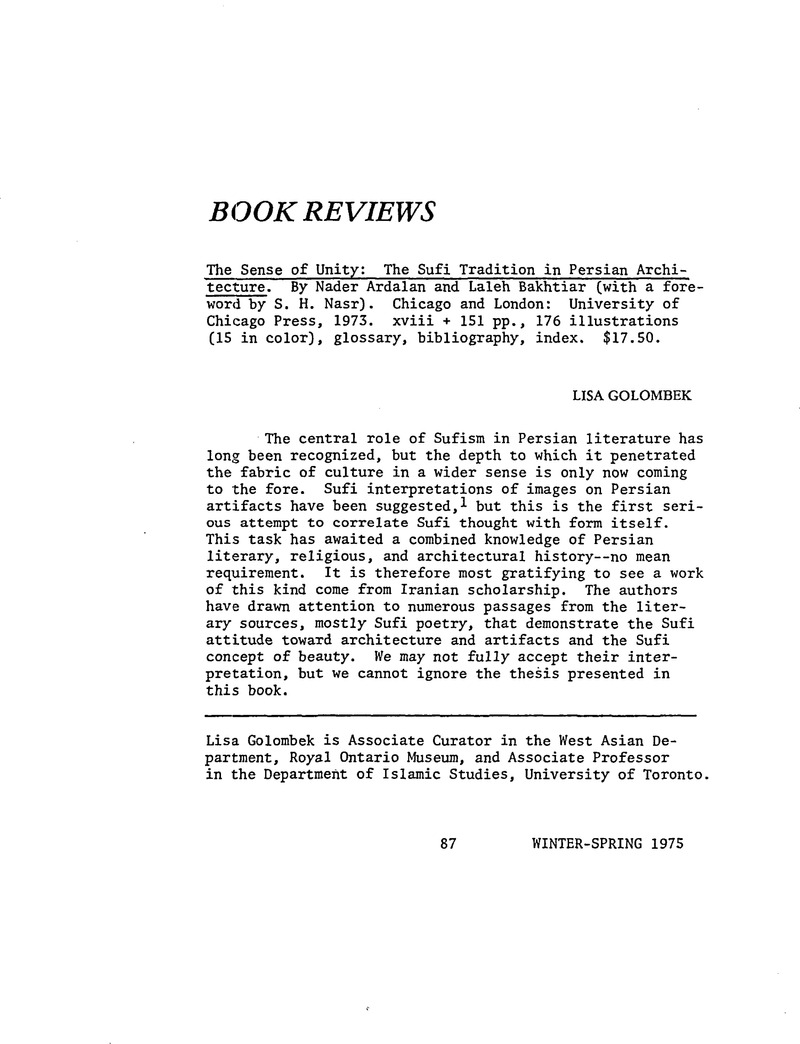Article contents
The Sense of Unity: The Sufi Tradition in Persian Architecture. By Nader Ardalan and Laleh Bakhtiar (with a foreword by S. H. Nasr). Chicago and London: University of Chicago Press, 1973. xviii + 151 pp., 176 illustrations (15 in color), glossary, bibliography, index. $17.50.
Review products
Published online by Cambridge University Press: 01 January 2022
Abstract

- Type
- Book Reviews
- Information
- Copyright
- Copyright © Association For Iranian Studies, Inc 1975
References
Notes
1. Guest, G. D. and Ettinghausen, R., “The Iconography of a Kashan Luster Plate,” Ars Orientalis 4 (1961), pp. 25–64Google Scholar.
2. Rempel, L. I., Arkhitekturnyi Ornament Uzbekistana (Tashkent, 1961)Google Scholar; Bulatov, M. S., “Iskusnye Geometricheskie Priemy v Zodchestve Samarkanda kontsa XIV — nachala XVvv,” Iskusstvo Zodchikh Uzbekistana 4 (1969), pp. 64–106Google Scholar.
3. I am grateful to Mr. Bagher Shirazi of the National Organization for the Preservation of Historical Monuments in Iran at Isfahan for this information.
4. The main sources for the early history of Isfahan are Abū Nuᶜaym (K. Dhikr Akhbār Iṣfahān), al-Māfarrūkhī (Maḥāsin Iṣfahān), with brief but very important comments by Ibn Ḥawqal (Ṣūrah al-Arḓ) and al-Muqaddasī (K. Aḥsan al-Taqāsīm fī Maᶜrifah al-Aqālīm). I have discussed the sources in further detail in “Urban Patterns in Pre-Safavid Isfahan,” Iranian Studies, Vol. VT”. Nos. 1-2 (Winter-Spring, 1974), pp. 18-44.
5. Bosvorth, C. E., “The Heritage of Rulership in Early Islamic Iran and the Search for Dynastic Connections With the Past,” Iran 11 (1973), pp. 51–62CrossRefGoogle Scholar.
- 2
- Cited by




